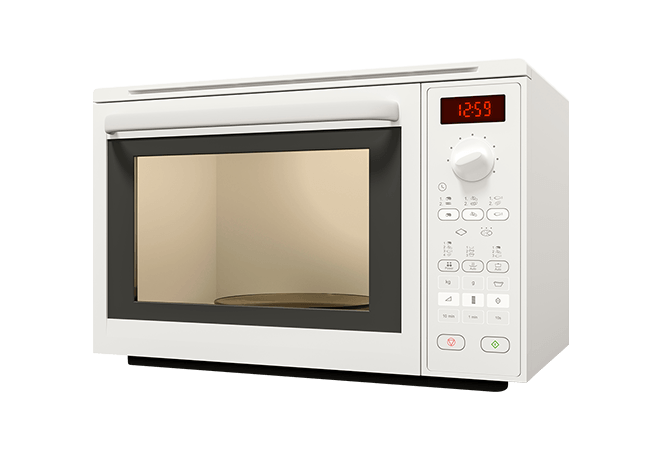Microwave Radiation Testing

Are your microwaves in the workplace safe?
Do you want to make sure that your microwave ovens are not leaking radiation?
ElectroTechnics has got you covered.
Microwaves are fairly common in Australian workplaces. Though generally harmless to us, problems do arise when a microwave becomes faulty as a result of damage, misuse or mishandling and starts leaking electromagnetic radiation. This radiation leakage can be bad for your health, especially if you’ve been exposed to dangerous levels of it.
ElectroTechnics offers microwave radiation testing services for clients in Greater Sydney, Wollongong and Shellharbour. We follow a rigorous step-by-step process when testing microwaves for radiation leaks wherein each step is done in accordance with the Australian standards and regulations. This not only ensures that your workplace is compliant with current legislation - but also gives you peace of mind knowing that your microwaves aren’t emitting harmful radiation.
Our microwave radiation testing includes:
- Visual inspection for physical damage
- Radiation leakage inspection
- Electrical safety test
Ensure that your workplace’s microwave ovens aren’t harmful to use. Book in your microwave testing service.

Frequently Asked Questions
-
What is microwave radiation?
Most people are familiar with microwave ovens, and they are a staple in many kitchens. But what many people don't know is that microwave ovens emit radiation. This radiation can be harmful to both humans and animals, and it is important to be aware of the risks involved in using these devices.
Microwave ovens work by emitting electromagnetic waves that cause water molecules to vibrate. This vibration creates heat, which cooks the food. The energy from the microwaves is absorbed by the water molecules, and this process can cause DNA damage.
There are two types of radiation emitted by microwave ovens: ionizing and non-ionizing. Ionizing radiation is more harmful because it can break apart molecules, including DNA. Non-ionizing radiation is less harmful, but it can still cause damage to cells and tissues.
Ionizing radiation is known to increase the risk of cancer, and it has also been linked to other health problems such as reproductive issues and birth defects. Non-ionizing radiation has been linked to dizziness, headaches, and fatigue.
-
What are the causes of microwave oven leaks?
Microwave radiation leakage can be caused by a variety of factors, including damaged or defective equipment, improper installation, and misuse. In some cases, microwave radiation can also leak from the device due to its design.
One of the most common causes of microwave radiation leakage is damage to the device. If the door or seals on the microwave are damaged, it can allow radiation to escape. Other common causes of radiation leakage include loose screws or bolts, corroded wiring, and broken parts.
Incorrect installation can also lead to microwave radiation leakage. If the microwave is not properly positioned relative to other appliances or electronic devices, it can cause interference and increase the risk of radiation exposure.
Misuse of a microwave can also lead to radiation leakage. For example, using the microwave for inappropriate purposes, such as heating non-food items, can cause damage and increase the risk of exposure.
Design flaws can also lead to microwave radiation leakage. Some devices are designed with vents that allow radiation to escape. If these vents are not properly sealed, they can allow microwaves to escape and increase the risk of exposure.
-
How to detect microwave oven radiation?
There are a few ways to tell if your microwave is emitting radiation. One way is to look for a label on the back or bottom of the oven that says "EMF" or "RF." These labels indicate that the oven has been tested for electromagnetic compatibility and meets safety standards.
Another way to tell if your microwave is emitting radiation is to use an EMF meter. These devices measure the amount of electromagnetic radiation in an area and can be used to detect the presence of microwaves. If you place the meter near your oven, it should register a reading.
If you're concerned about the amount of radiation your microwave is emitting, you can take a few simple steps to reduce it. One way is to keep the oven door open as long as possible after use. This will allow the radiation to dissipate. You can also avoid standing directly in front of the oven when it's on.
Finally, if you're still worried about the amount of radiation your microwave is emitting, you can purchase a safer model. There are a number of microwaves available that emit very low levels of radiation.

ElectroTechnics Test and Tag is your premium contact for all workplace electrical testing and tagging and RCD trip time measurements.
Browse Our Website
Contact Information
Phone: 02 4063 1452
Serving Greater Sydney, Wollongong and Shellharbour Region.
Locations
Mon-Fri 08:00 AM - 05:30 PM


